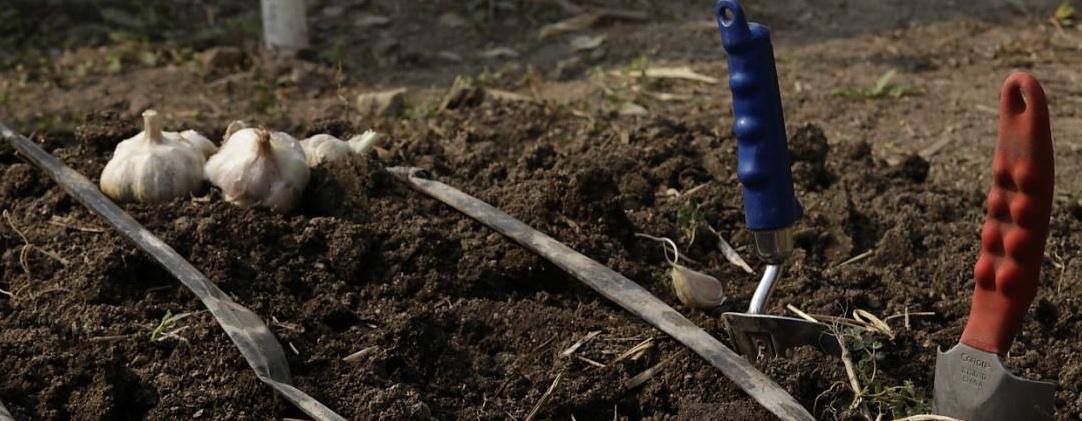Garlic Planting With Edible Campus Gardens


University of Utah’s Edible Campus Gardens is just some of many hidden gems throughout the U’s campus. Casually strolling by, the garden appears to be a lush oasis of fruits, vegetables, and herbs. Peppered with buzzing bees and the occasional butterfly—and sometimes humans too.
The gardens were established in 1996 by Biology Emeritus Professor, Dr. Fred Montague. Over 10 years later, the gardens continue to be a flourishing space open to the public to learn about ecology and organic gardening.
All are welcome to the gardens.
We had the opportunity to meet with garden coordinator Jessica Kemper, to get the scoop on fall garlic planting.
“The best time to plant is about 6-8 weeks before the first frost,” says Kemper. “So you’re looking at about the second to fourth week of September.”
In case you’re feeling confused about where to start, just follow these simple steps:
Remember, before planting your garlic make sure your soil is evenly moisturized and has very good drainage. According to Kemper, Utah soil is especially rough. It is known for being hard and full of clay. Mixing in compost or organic fertilizer is very important.
Be sure to mulch by adding straw or other organic matter to help guard the garlic against Utah’s harsh winter. Now all that’s left to do is wait for spring!
When leaves begin to grow in the spring you can choose to fertilize with a substance high in nitrogen, like blood meal. If mulch has decomposed you can re-apply for moisture retention and weed control.
The hard neck variety of garlic will produce scapes (flowers) that should be removed so the plant diverts its energy into producing bulbs. The scapes smell and taste delicious and can be added to recipes, so consider using them in the kitchen as well!
The plants will eventually stop producing new leaves and will start to brown, usually around June (9 months). At this point, turn your irrigation off and allow the soil to dry and the bulbs to “cure”. Allow the garlic to dry for two weeks in the ground, then remove without disturbing the bulbs (do not clean the dirt off the papery husks). Let the bulbs dry for another 2-3 weeks outside of the ground in an area with good air circulation. Letting the bulbs cure and dry allows them to be stored for longer periods of time.
It’s important to note that when garlic is first removed from the ground, it is fresh and prone to bruising, so be gentle with these fresh bulbs. Once it has cured for several weeks, it is safe to remove the dirt and store them. You can even braid your cloves of garlic by their stems, and hang them in your kitchen before eating them.
Your garlic can be stored for up to 6 months in your pantry, keeping it away from moisture or light or else it will begin to sprout. Garlic will get spicier with age!
Edible Campus Gardens sells their garlic, and other delicious garden goodies every Thursday at the U of U farmers market until Oct. 5.
Happy garlic planting!
If you live in Utah and have a garden or garden project that you'd like to be featured on Modern Gardener, click here!